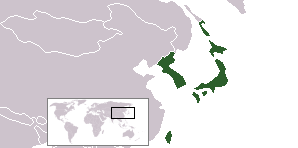|
Escola Japonesa De São Paulo
The ''Escola Japonesa de São Paulo'' (, "São Paulo Japanese School"; ) is a Japanese international day school in , Capão Redondo, Subprefecture of Campo Limpo, São Paulo, operated by the ''Sociedade Japonesa de Educação e Cultura''. It serves students from 6 to 15 years of age in grades 1 through 9. Most of the students have Japanese company executives as parents. The school uses the Japanese curriculum.Feitoza, Mirna.Alunos japoneses no lado de cá '' Folha de S.Paulo''. August 30, 1997. Retrieved on March 18, 2014. History The school opened on August 14, 1967. ." ''Escola Japonesa de São Paulo''. Retrieved on March 18, 2014. From the time of opening until 1981, school enrollment increased due to a corresponding increase in Japanese corporate operations. Enrollment decreased after 1981.< ... [...More Info...] [...Related Items...] OR: [Wikipedia] [Google] [Baidu] |
São Paulo
São Paulo (; ; Portuguese for 'Paul the Apostle, Saint Paul') is the capital of the São Paulo (state), state of São Paulo, as well as the List of cities in Brazil by population, most populous city in Brazil, the List of largest cities in the Americas, Americas, and both the Western Hemisphere, Western and Southern Hemispheres. Listed by the Globalization and World Cities Research Network (GaWC) as an global city, alpha global city, it exerts substantial international influence in commerce, finance, arts, and entertainment. It is the List of largest cities#List, largest urban area by population outside Asia and the most populous Geographical distribution of Portuguese speakers, Portuguese-speaking city in the world. The city's name honors Paul the Apostle and people from the city are known as ''paulistanos''. The city's Latin motto is ''Non ducor, duco'', which translates as "I am not led, I lead." Founded in 1554 by Jesuit priests, the city was the center of the ''bandeirant ... [...More Info...] [...Related Items...] OR: [Wikipedia] [Google] [Baidu] |
List Of Brazilian Schools In Japan
A list is a set of discrete items of information collected and set forth in some format for utility, entertainment, or other purposes. A list may be memorialized in any number of ways, including existing only in the mind of the list-maker, but lists are frequently written down on paper, or maintained electronically. Lists are "most frequently a tool", and "one does not ''read'' but only ''uses'' a list: one looks up the relevant information in it, but usually does not need to deal with it as a whole". Lucie Doležalová,The Potential and Limitations of Studying Lists, in Lucie Doležalová, ed., ''The Charm of a List: From the Sumerians to Computerised Data Processing'' (2009). Purpose It has been observed that, with a few exceptions, "the scholarship on lists remains fragmented". David Wallechinsky, a co-author of '' The Book of Lists'', described the attraction of lists as being "because we live in an era of overstimulation, especially in terms of information, and lists help ... [...More Info...] [...Related Items...] OR: [Wikipedia] [Google] [Baidu] |
Secondary Schools In Brazil
Secondary may refer to: Science and nature * Secondary emission, of particles ** Secondary electrons, electrons generated as ionization products * The secondary winding, or the electrical or electronic circuit connected to the secondary winding in a transformer * Secondary (chemistry), a term used in organic chemistry to classify various types of compounds * Secondary color, color made from mixing primary colors * Secondary mirror, second mirror element/focusing surface in a reflecting telescope * Secondary craters, often called "secondaries" * Secondary consumer, in ecology * An antiquated name for the Mesozoic in geosciences * Secondary feathers, flight feathers attached to the ulna on the wings of birds Society and culture * Secondary (football), a position in American football and Canadian football * Secondary dominant in music * Secondary education, education which typically takes place after six years of primary education ** Secondary school, the type of school at the sec ... [...More Info...] [...Related Items...] OR: [Wikipedia] [Google] [Baidu] |
Nihonjin Gakkō In Brazil
are an East Asian ethnic group native to the Japanese archipelago. Japanese people constitute 97.4% of the population of the country of Japan. Worldwide, approximately 125 million people are of Japanese descent, making them one of the largest ethnic groups. Approximately 120.8 million Japanese people are residents of Japan, and there are approximately 4 million members of the Japanese diaspora, known as . In some contexts, the term "Japanese people" may be used to refer specifically to the Yamato people, who are primarily from the historically principal islands of Honshu, Kyushu and Shikoku and constitute by far the largest group. In other contexts, the term may include other groups native to the Japanese archipelago, including Ryukyuan people, who share connections with the Yamato but are often regarded as distinct, and Ainu people. In recent decades, there has also been an increase in the number of people with both Japanese and non-Japanese roots, including half Japanese p ... [...More Info...] [...Related Items...] OR: [Wikipedia] [Google] [Baidu] |


